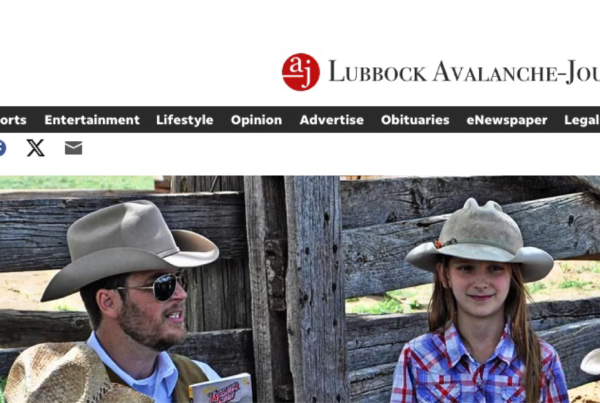Q&A with S. J. Dahlstrom
What was your inspiration for the series? How do you get ideas for your stories?
S.J.: My inspiration for the series was not unlike many children’s book authors’ – I wanted my own kids to know these stories and have good books to read. Life has changed incredibly quickly in the last 15 years, and I realized that without some deliberate parenting the fallback childhood of family and the outdoors would be swallowed up by iPads and flat screens and virtual life. Hopefully these books relate gentle learning experiences in the outdoors and with animals and with older people that formed the basis of my upbringing.
How did you come up with the character of Wilder? Do you base your characters on real people?
S.J.: Wilder, I suppose, is mostly me as a 12 year old. Or the better parts of me. You try not to make a character just an idealized hero, and yet I believe in heroes and want other kids to believe in them as well. The kind of hero a culture celebrates says a lot about the culture. We will always need heroes who are brave and true, if imperfect. Almost all of my characters are based on real people to some degree. I have tried inventing characters from scratch, and it never seems to ring true for me. I know some authors are able to pull it off, but I try to write only what I know.
Was your childhood anything like Wilder’s?
S.J.: Yes, my childhood was much like his. I grew up on a small farm/ranch. I was surrounded by miles of wilderness in which I could explore and wander. I got an Atari game system for my birthday one year and played it non-stop for two weeks, and then never touched it again. There was too much going on outside. I was very lucky.
In your fourth book, The Green Colt, Wilder has to break a horse. Have you ever had that experience?
S.J.: I was raised around horses and watching older men break and train them. I broke my first colt when I was 19 and have worked many since. I still love working with young horses, and I ride and “daywork” as a cowboy often.
Q&A with S. J. DahlstromDo you imagine Wilder getting older over the course of the series, or will he remain 12?
S.J.: There are positives and negatives to both sides of that issue. We all loved watching Harry Potter grow up. And Opie Taylor. Each new year of adolescence is so full of wonderful surprises and fresh problems. And yet, the eternally innocent eyes of a 12 year old are what many psychologists tell us we are trying to get back to all our adult lives. I buy that. Lifting a character out of time and space, no chronology, has a wonderful freedom. Why mess that up? I’m torn. We’ll see what happens in book five, Black Rock Brothers, which is under construction as we speak.

What role do you feel technology plays in the series? Is that important to you?
S.J.: Technology has become a by-word for this generation and it seems to mean only one thing – having a screen in your pocket and being constantly on the chic social media merry-go-round. I reject that definition. Technology has been around since the wheel, the match, scrolls to printing press to books, the lightbulb, vaccines, and the nuclear bomb. In that sense, Wilder lives in a vast sea of technology that is benefitting his life constantly. Wilder lives in a family culture where his parents still call the shots, not the other way around. And their view is that encouraging their son towards books, nature, and people are the most nourishing experiences for him to have at this age.
How does working with kids influence your writing?
S.J.: I have worked with kids my entire career, first with children’s homes and boys’ ranches, and now with teaching, not to mention being a parent for 15 years. I have witnessed kids in every situation imaginable. Hopefully this ongoing experience gives my writing an authenticity and feel that other books might not have.
Do you have a writing schedule?
S.J.: I write every day no matter what at 5:30 am.
What are some of your favorite children’s books?
S.J.: Books that leave you better after reading them, and that are good over and over again: Huckleberry Finn, Robinson Crusoe, Treasure Island, Old Yeller, The Education of Little Tree,\ Shel Silverstein books, Hank the Cowdog, Chronicles of Narnia, Lord of the Rings, Little House on the Prairie.
Who are other writers who have inspired you?
S.J.: Soren Kierkegaard gave me courage to write what I had to. C.S. Lewis and J.R.R. Tolkien gave me gentle but present spirituality. Ernest Hemingway gave me the example of writing purity and outdoor inspiration. John R. Erickson gave me the example of hard work. Robert Louis Stevenson gave me the love of adventure through a child’s eyes. Garrison Keillor gave me the love of small-town simple things. Mark Twain gave me biting wit without vulgarity. John Muir, Teddy Roosevelt, Robert Frost, Emily Dickinson, Henry David Thoreau gave me the love of simple observation and immersion in nature. I’m not saying I write like these folks, just that I am inspired to write like them.

What is the greatest joy you get from writing books?
S.J.: Easy question – kids’ letters, when a kid takes the time to write me a note about how my writing opened some small door for them. It is such a privilege to be a part of someone’s childhood. I guess I take that very seriously. Writing should nourish, not damage.
How did you come up with the character of Tequito? Can you tell us more about the relationship between Mexican cowboying and its American counterpart?
S.J.: Tequito was a fun character to write. I have been fortunate to work not only with excellent American cowboys, but also with Mexican cowboys/vaqueros. I noticed early on a distinct difference in style, despite the work being largely the same. Later, I learned that everything we have in American cowboying (skills, language, gear) was borrowed from a Mexican vaquero culture that existed hundreds of years before Texas was a republic. The Tequito character is paying homage to that heritage. The contributions of Mexican vaqueros have been important for my understanding and rearing in the West, and I hope they will be for others as well.
Your books are very much influenced by their setting. What do you find so inspiring about the West? What do you think kids can learn from the environment and culture of the part of the country you write about?
S.J.: “Geography is destiny” has been a sentiment well-worn over the years. “Place shapes people” is another way to say it. The American West was a unique experience and it remains so. Thoreau said famously, “In wildness is the preservation of the world.” I’ve never been exactly sure what he meant, but my instincts tell me he was saying that something very important happens to people in the outdoors, in wildness, in solitude. The West has wildness and solitude in spades. So, a place as unique and wild as the West means that the West has to be a major character, if written accurately. That ‘West’ character is driving the action, driving the personalities, driving the development through survival. I was raised around farmers and ranchers who lived and died and went bankrupt based on annual rainfall, not to\ mention wildfire and bugs and disease. The major player in their lives wasn’t Voldemort, or Darth Vader, or crime bosses…it was the weather. The Dust Bowl generation were the people who raised me. That view of life sticks to you like grass burrs. A large percentage of Americans has never seen that life up close. It’s scary, but like Thoreau was hinting at, it is preserving something valuable for humanity. It is beautiful and honest. Always. There is a goodness to wild places. (wink)

What do you want children to take away from your books?
S.J.: I am most pleased when a child comes up to me with eyes glowing and says, “I got a new horse,” or “I went hunting with my grandad last year,” or “My buddy and I caught a huge fish,” or “I planted a wildflower garden.” I hope kids discover that real adventure is waiting for them outside their front door and that they are not dumb or uncool for saving up for a new saddle, knife, or fishing pole instead of the latest iPhone. Audubon said, “Nature indifferently copied is far superior to the best idealities.” I hope all kids will realize how rich they are with the natural, free things that surround them every day.





